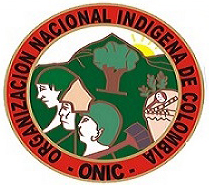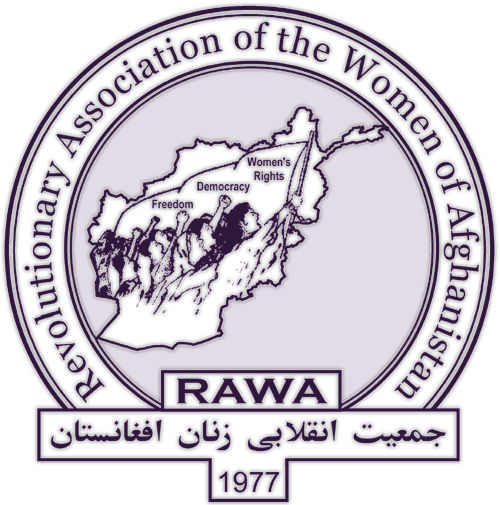mining
Cajamarca: Conga occupation not moved
Campesinos from some 40 pueblos across Celendín province, in Peru's northern region of Cajamarca, held a meeting at Huasmín village Oct. 23 to announce a cross-country march that would arrive in mid-November at the planned site of the Conga gold mine, where marchers would join the encampment that has been established there. Campesinos have occupied the site for months to protect alpine lakes slated be destroyed to make way for open-pit operations. By Nov. 24, which will mark the two-year anniversary of the start of the protest action, the Celendín campesinos hope to have a "Casa Rondera" built on private land adjacent to the Conga site which has been volunteered for the cause by local residents. The casa will be a communal residence for the protesters, who are organized in rondas, peasant self-defense patrols. (Servindi, Oct. 25; Celendin Libre, Oct. 23)
Cuzco: unrest over water mega-diversion
In a popular assembly Nov. 6, residents of Espinar village in Peru's Cuzco region declared themselves on a "war footing," pledigng to resist imminent construction of the Majes Siguas II irrigation mega-project, which would divert water from indigenous communities in the highlands to agribusiness interests on the coast. Profesor René Huamani Quirita, president of the Unified Defense Front for the Interests of Espinar Province, protested that hundreds of National Police troops have been stationed in the nearby community of Yauri, apparently in anticipation of protests. (Radio Universal, Cuzco, Nov. 6) Later that day, Espinar's mayor Oscar Mollohuanca announced that some 100 police troops had attacked local villagers at Urinsaya in Coporaque district, beating five. The whereabouts of one villager has been unknown since the attack, and Mollohuanca joined the missing campesino's family in demanding an urgent investigation. (Radio Universal, RPP, Nov. 6)
Chile: Barrick suspends Pascua Lama construction
The Toronto-based Barrick Gold Corporation, the world's largest gold producer, announced on Oct. 31 that it was temporarily halting work on its unfinished Pascua Lama gold and silver mine high in the Andes on the Chilean-Argentine border. The only operations at the mine will be those required for compliance with environmental protection laws, according to the company, which said resumption of work would depend on costs and the outlook for gold prices. The projected cost of the massive mine, which was originally set to open in the second half of 2014, has risen from $3 billion in 2009 to $8.5 billion now. Barrick is short of cash after a dramatic drop in international gold prices in the spring; gold is currently selling for 20% less than it was a year ago. Barrick is cutting 1,850 jobs and is said to be considering the possibility of selling an interest in Pascua Lama, on which it has spent $5.4 billion to date.
Bolivia: indigenous power at issue in hunger strike
Six leaders of the dissident Aymara organization CONAMAQ held a hunger strike for four days at the doors of the Bolivian congress building last month, as the lower-house Chamber of Deputies debated a bill on assigning legislative seats to ethnicities and regions of the country. The strike was lifted after the law was approved Oct. 7. By then, one Aymara elder, Simón Antonio Cuisa from Charcas Qhara Qhara, Potosí, had been hospitalized. On breaking his strike after the vote, CONAMAQ leader Rafael Quispe said, "The plurinaitonal state is mortally wounded." CONAMAQ and its congressional allies—dissident members of the ruling Movement Towards Socialism (MAS), calling themselves the "free-thinkers" (librepensantes)—pledged to seek the law's reform. Dissident MAS lawmaker Rebeca Delgado spoke on the chamber floor in support of CONAMAQ's demands before the vote. CONAMAQ is demanding an increase in the number of congressional seats assigned to indigenous Bolivians from seven to 16, questioning the results of the 2012 census on which the apportioning was based. Chamber of Deputies president Betty Tejada (MAS) responded that the 130-seat body is already 70% indigenous. (Erbol, Oct. 31; Reuters, Oct. 8; BolPress, Cámara de Diputados, Oct. 7; Erbol, Oct. 5; La Prensa, La Paz, Oct. 6; Servindi, Oct. 4)
Mexico: Cananea strike broken, miners left jobless
The giant Buenavista del Cobre copper mine in Cananea, near the US border in the northwestern state of Sonora, is in full operation again, a little more than three years after a police assault ended a 2007-2010 strike over health and safety conditions by Section 65 of the National Union of Mine and Metal Workers and the Like of the Mexican Republic (SNTMMSRM, "Los Mineros"). The mine produced earnings of $288.69 million for its owner, Grupo México (GM), in the second quarter of this year, according to an article in the left-leaning Mexican daily La Jornada. But the town itself hasn't prospered. The article reports that the past 10 years have brought an increase in "organized crime, unemployment, shortages of drinkable water, a growing incidence of different types of cancer and acute respiratory diseases, ecological deterioration, alcoholism, and, because of a large transient population, problems with housing and urban infrastructure."
Blood jade empire as Burma warlords diversify
An in-depth Sept. 29 Reuters report on the multi-billion-dollar but very murky jade trade in Burma raises the specter of "blood jade"—without actually using the phrase. Almost half of all jade exports are "unofficial"—apparently spirited over the border into China with little or no formal taxation, representing billions of dollars in lost revenues. Official statistics are said to indicate that Burma produced more than 43 million kilograms of jade in fiscal year 2011-12, worth a low-balled $4.3 billion. Yet official exports of jade that year stood at only $34 million. (It isn't explained how all that "unofficial" jade made it into the production stats in the first place.) China doesn't publicly report how much jade it imports from Burma, but jade is included in official imports of precious stones and metals, which in 2012 were worth $293 million—a figure too small to account for billions of dollars in Burmese jade.
Peru: deadly attack on family of miner leader
The wife and infant son of a local mining leader were assassinated last week in the community of Pamputa, Coyllurqui district, Cotabambas province, Apurímac region, Peru. The bodies were found Sept. 18 by Carmelo Hanco, president of the local Artisenal Miners Association of Los Apus de Chunta, when he returned home from a trip to Abancay, the regional capital, where he had been petitioning authorities for the "formalization" of mining claims. Authorities said the killings took place during a robbery, but Hanco said he suspected the involvement of the Xstrata mining company—which he charged has been pressing for the arrest of independent artisenal miners in the region with an eye towards establishing its own operations. The company has for 10 years operated a giant gold, silver and copper mine at nearby Las Bambas (Chahuahuacho district), above the opposition of both local artisenal miners and campesinos. (Con Nuestro Peru, Sept. 21)
Peru: Conga protest camp fired on
On Sept. 20, a group of workers and security guards from the Yanacocha mining company attacked the protest encampment established by local campesinos at the Conga site, where the company seeks to expand operations of Peru's biggest open-pit gold mine. The tents and bivouacs were torn down and burned, and the protesters evicted from the site. Three days later, protesters returned to re-establish the encampment—some 500 strong, and headed by the movement's most visible leaders, Jorge Rimarachín, Gregorio Santos and Marco Arana. But that night, a group of some 10 men, hidden by darkness on the hills overlooking the new camp, fired shots at the protesters. A detachment of DINOES, the special anti-riot force of the National Police, looked on and did not interfere.















Recent Updates
8 hours 15 min ago
8 hours 40 min ago
8 hours 58 min ago
9 hours 15 min ago
9 hours 41 min ago
1 day 9 hours ago
2 days 7 hours ago
3 days 6 hours ago
3 days 6 hours ago
5 days 7 hours ago